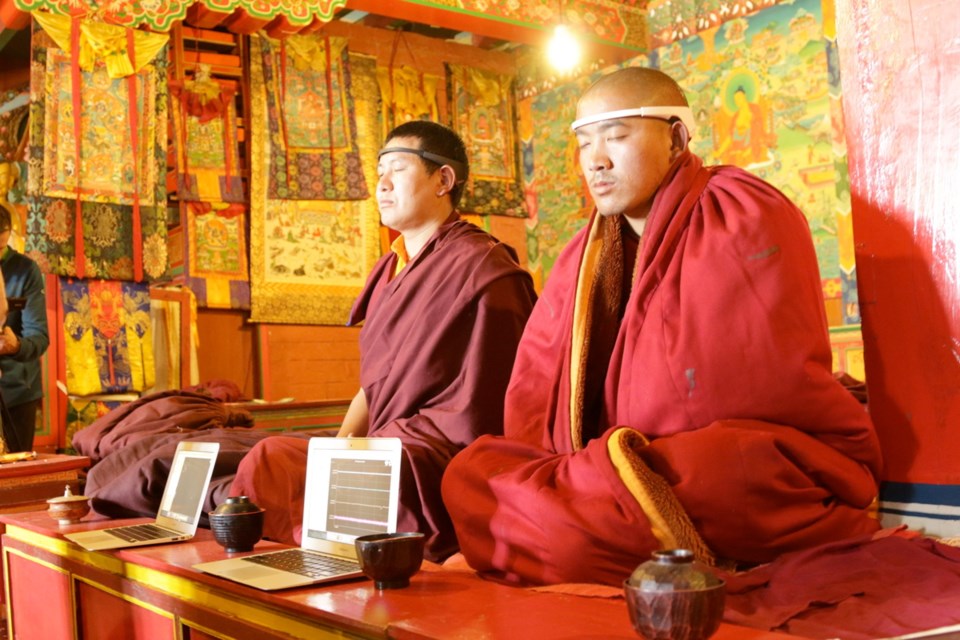A University of Victoria scientist was part of a project that took him to the mountains of Nepal, in a twist from the practice of bringing research subjects into the lab.
He returned with new findings about the human brain and benefits of meditation.
Neuroscientist Olav Krigolson was in Nepal conducting research on the effects of high altitude when given the chance to work with Buddhist monks at a nearby monastery, investigating the effects of meditation on the brain.
Krigolson said similar research has been done, but, by being at the monastery, his group was able to gather a large sample size of 27 monks, all of them well practised in meditation.
“Whenever you are trying to establish a scientific truth, you need large numbers,” he said. “So when this opportunity presented itself, we just said, ‘Oh, we have to do this.’ ”
Krigolson’s work was done in partnership with Gordon Binsted of the University of British Columbia’s faculty of health and social development.
The scientists used a headband equipped with an electroencephalograph, or EEG, sold in electronics stores as an aid to meditation. It measures things such as heart rate, body temperature, respiratory rate, muscle tension and brain waves. The feedback allows users to adapt their methods to get better results.
The scientists reworked the software to measure and record the monks’ brain activities before and during meditation.
Measurements clearly showed an increase in brain signals associated with concentration and relaxation during meditation. But the signals also showed activity associated with synchronizing the brain’s various functions, such as emotion or mathematical thinking.
Krigolson said increased synchronization of brain functions is a positive. He likened it to various departments of a large well-functioning organization being co-ordinated and acting in harmony.
“Better synchronization is good,” he said. “It means your brain is functioning more smoothly.”
The scientists went a step further to measure the after-effects of meditation on cognitive function.
The monks played a simple video game, counting the number of blue circles appearing in screen filled mostly with green circles. They played it before and after meditation.
It turned out the monks performed better at counting blue circles after meditation, suggesting that meditation has benefits that carry over even after it is has ended.
Krigolson said his research might lead to diagnostic tools that could be used to test a person’s effectiveness while dealing with fatigue. Hospitals are showing interest, particularly with doctors and other medical staff working long shifts.
It might also be used as a diagnostic tool for mental health. Doctors might start examining signals in the brain the way they already check things like blood pressure.
“Being able to identify good brain states versus bad brain states could be very useful,” Krigolson said.
“If your brain data doesn’t look very good, you need to slow down.”
Krigolson said working with the monks was a treat. They were all keenly interested in the work and shared a great sense of fun.
“These are guys who study for a living, so they are scholars,” he said. “They were very curious and quite fascinated when they saw their own brain waves.”
They were also quite jovial, Krigolson said. “My own sense was that monks are quiet, serious guys, but it was quite the opposite — they were happy, upbeat and laughing all the time.”



